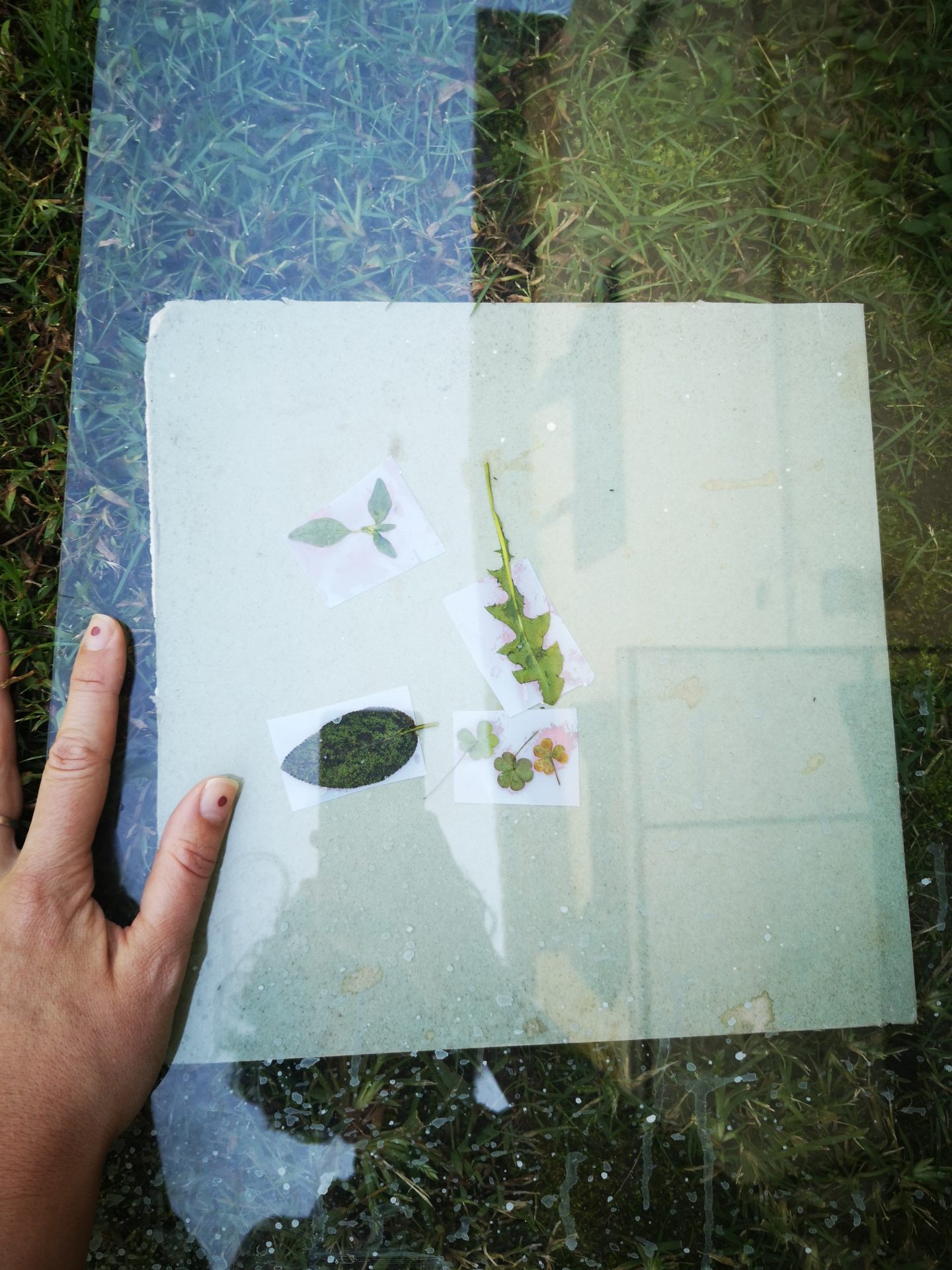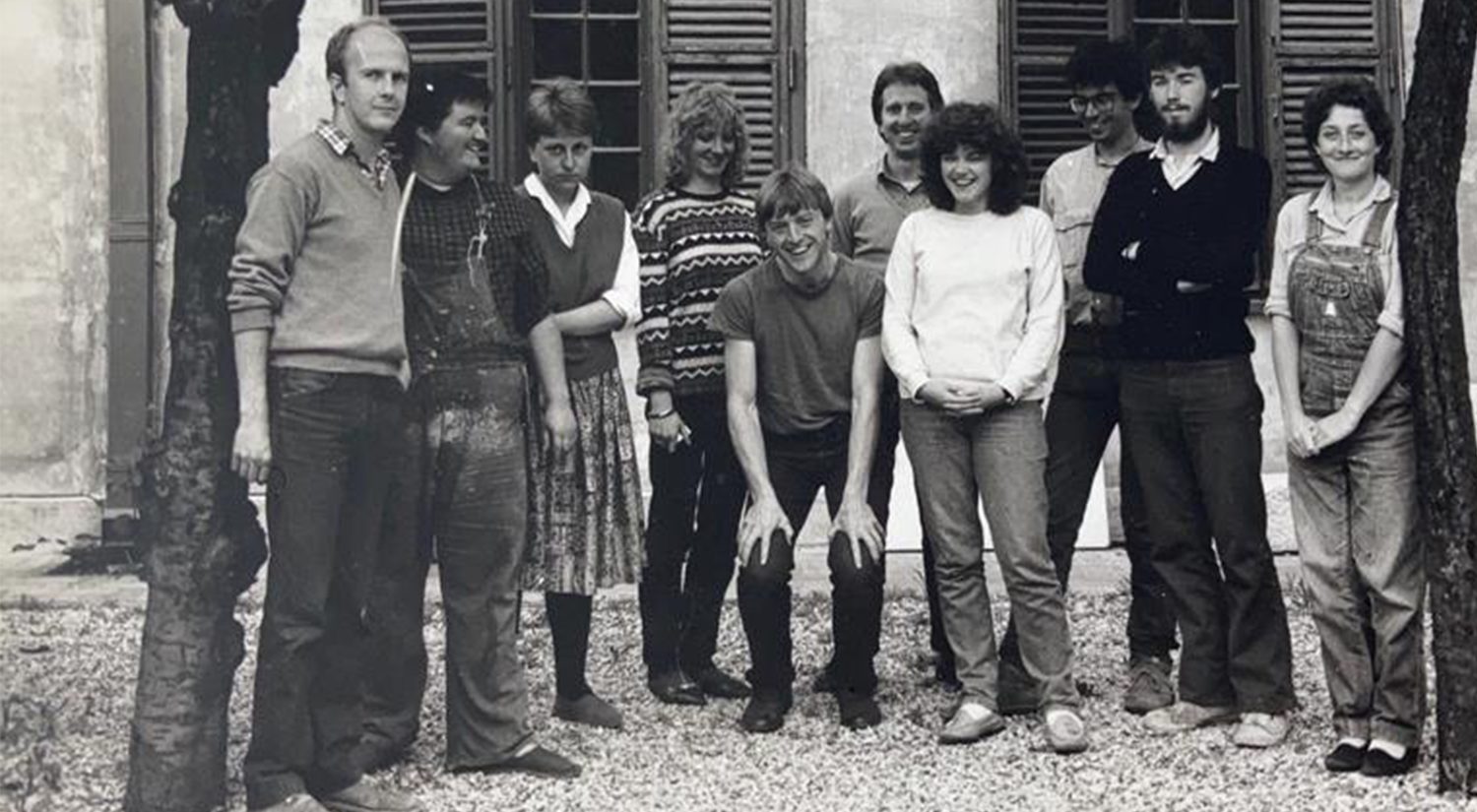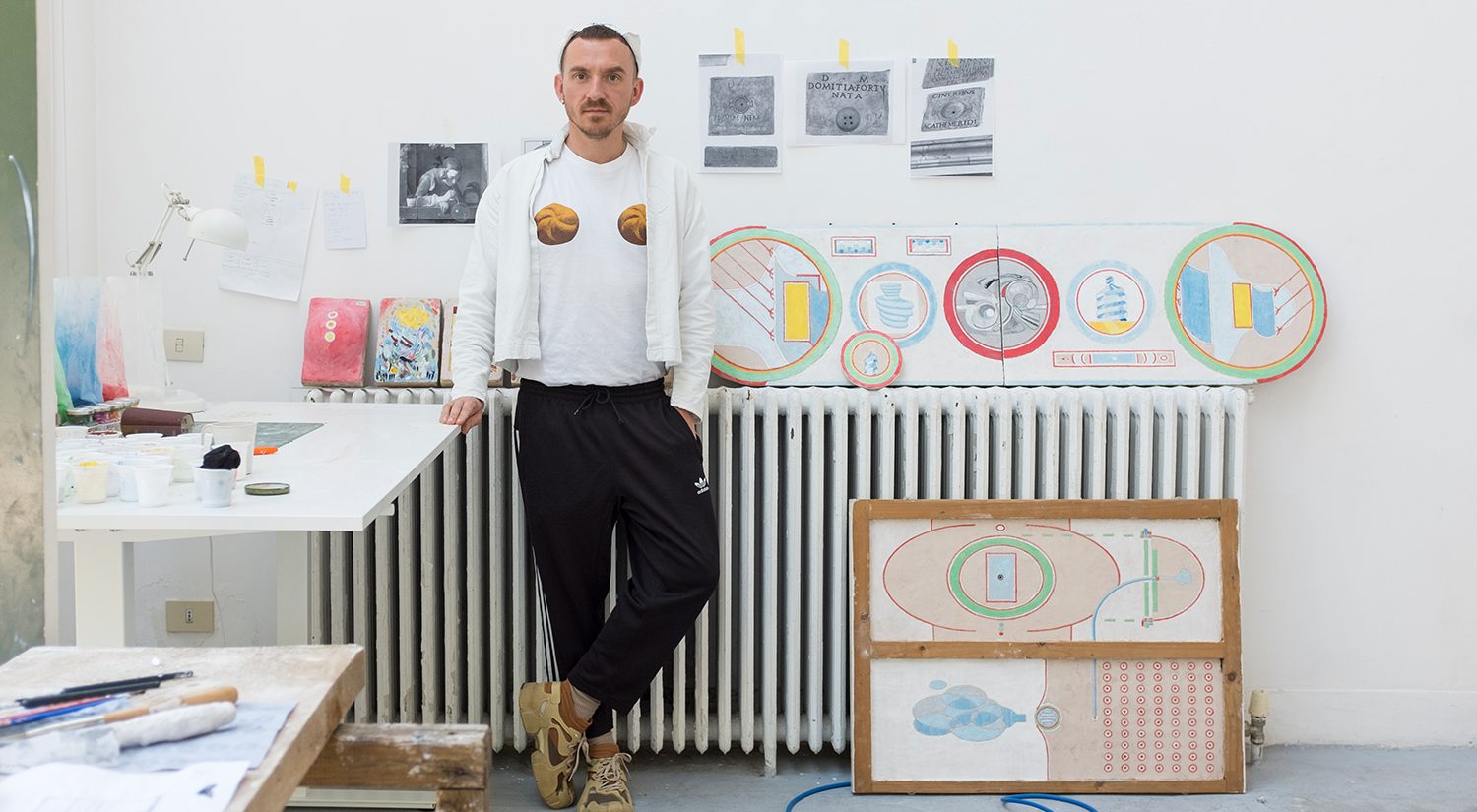An interview with Catriona Gallagher, winner of the Bridget Riley Fellowship, in which she speaks about the work she has produced during her residency at the BSR from September–December 2022, ahead of the Autumn Open Studios.
In your BSR project, you are investigating, especially through the lens of feminism and art history, how plants have been used in the past. How are you expanding this research?
I came to Rome for the Bridget Riley Fellowship to investigate human and plant relations in the form of historical hybrid figures. Representations of phytomorphosis – when a person changes into a plant – have a trajectory through culture in Rome, including Ovid’s Metamorphoses, the collision of pagan and early Christian imagery, Bernini’s sculptural retelling of Ovid’s story Daphne and Apollo, and the development of Grotesque foliate bodies. The Bernini sculpture has occupied a large and uneasy part of my thinking so far, for which, Marta, your suggestion of reading Griselda Pollock’s chapter ‘Gasping at Violence: Daphne’s open mouth and the trauma of gender’ in After-affects After-images (2013) has been a useful guide. I’ve spent the first part of the residency looking for Daphne in museums, galleries and public space.

Image: detail of Frieze with Battle between Gods and Giants, marble from Luni, last decade of the first century BC, inv. 2817 at the Centrale Montermartini. The museum label states: ‘Artemis…is taking an arrow from her quiver, while the laurel plant nearby suggests the presence of her brother, Apollo’.
Plants have always been loaded with association and used as symbols, for which there are whole systems of knowledge to read them with. I’m intrigued by how plants work as conceptual containers. When we recognise a living or depicted plant – by its leaf outline, growing habit, context and other visual characteristics – it opens up a container of associations in our minds, holding place, time, origin, use, hierarchies, power dynamics, etc. In the case of the bay-laurel plant (Alloro in Italian, Δἀφνη in Greek), which is depicted and growing everywhere in Rome, Ovid’s telling of Daphne’s story and its subsequent retellings over the last 2000 years reveal persisting ideas about the plant from a dominant perspective. Although Daphne was transformed into bay-laurel as salvation from Apollo’s advances and the nymph escaped marriage, Ovid’s passage ends with a taking of Daphne-the-tree, not as Apollo’s bride, but as his symbol.

Image: marked photocopies of Metamorphoses by Ovid, trans. A. D. Melville, 1986.
The final words of the passage in most English translations state that Daphne ‘seems to bow/nod her head’ ‘in assent/consent’, and the symbolism of laurel wreathing the heads of Apollo, victors, poets and graduating students alike weighs upon the woman/plant from this point. The assumption of consent to be used as a symbol echoes loudly round my head. However, we are now in a period of renegotiating our historical exploitation of Others, whether human or more-than-human, from legacies of colonialism and patriarchy to the over extraction of so-called ‘natural resources’. I aim for my research imagery to hold some of this tension and transformation within it.

Image: detail of Apollo and Daphne, Gian Lorenzo Bernini, 1622-5, Galleria Borghese.
What kind of photographic techniques are you experimenting with?
Having worked with plants as a subject for several years, my proposal for the Fellowship was to bring plants alchemically and materially into my work, so I’m experimenting with ecological developers derived from plants for hand-developing 35mm and 16mm film. Working in analogue rather than digital is also a recent development in my work so there’s a lot of trial and error involved. I have been filming on black and white 16mm film and making developer from bay-laurel infusions, a process I first tried in a workshop with artist Julia Parks last year. When I tried to develop a roll of 35mm still film with which I took photographs of the Bernini’s Apollo and Daphne, the soda was too strong and I managed to shear the emulsion clean off the film strip! But the erasure of the images of this troubling sculpture – the image of Apollo’s attempt to take Daphne for his own, reproduced countless times on the camera phones of tourists – was more interesting than a successful development.


Images: studio/garden process of developing phytograms on paper
I have also been working with phytography, a process developed by artist Karel Doing for chemically printing plants onto film and photographic paper. I’m soaking bay-laurel and other leaves in soda and vitamin c, laying them on strips of film or paper and exposing them outdoors. The chemical reaction between the silver halides in the emulsion and the plant phenols constitute a transformation that has interesting parallels with the metamorphosis I’m exploring thematically.

Image: studio/garden process of developing phytograms on 16mm film











